從一個字開始:也是一種眺看世界的方式
這本書是從想像建築家作建築時,腦海中究竟會浮現出什麼的好奇作開始,然後再界定以東亞區域的建築家,來作為進行探索與執行的範圍。
本書參與建築師所涵蓋的東亞區域,在歷史上都曾因漢字的先後使用,而同時受到孔子主導儒家文化的影響,另外也因為皆接受佛教為主要的宗教形式,使整個區域在歷史的發展中,有著某種在文化與思想上的同流趨向性。
發展了百年左右的現代建築,是因應一個全然嶄新的時代思潮而生。雙元革命的法國大革命與工業革命,重新定義社會階級與權力結構,並在理性與實證的思想支援下,讓技術材料與個人自我性得到極大的發揮空間,城市與建築也因此必然要大改變以作回應,全球皆不能免。
雙元革命對東亞的影響,陸陸續續在十九世紀後期顯現。整個現象從初期的巨大衝擊與震撼,與因此必須立即的自我調整與回應,再經過二十世紀透過模仿與銜接,而逐漸能夠同步進行對話。到了現今的二十一世紀,東亞區域在全球各項領域裡,逐漸扮演崛起與自我發聲的角色,是清楚可以預見的趨勢,都市與建築是其中受矚目的一環 ,勢必更不能自免於外。
而方才過往的二十世紀,因為現代化腳程的差異,以及區域內各項戰爭與對抗的關係,使得整個東亞區域,一直以著紛亂的獨自姿態,或向西方去求取對話可能,或各自不溝通的喃喃獨語。這樣過了整個漫長的世紀,如今因為現代化近程逐漸接近,區域內對抗的壓力也在緩和中,似乎看到彼此對話與共同發聲的可能了,時代也似乎同時作著這樣的呼喚。
因此,本書的目的有二,一是鼓勵優秀專業建築人,能透過對自我建築關鍵字的思考與陳述,來與非建築背景的一般大眾作對話,讓一般人藉由此書,瞭解建築人的多面貌內涵;此外,也意圖藉此來建構東亞建築師彼此間初步的對話機制與平台,希望透過這三十位東亞建築人所提出的關鍵字與作品,讓在目前全球化與資本化過程裡,某種快速同質化現象下,地域與文化差異的特質得以繼續顯現,並藉以鼓勵多元區域價值系統與觀念的發展,共同豐富人類的多樣文明。
這本書邀請十位東亞建築師,區域包括日本、韓國、中國、香港與台灣。並請此十人各自推薦一位新秀與前輩的當代建築師(在各自的地域、文化與社會範圍內),這樣共十組三十名建築人。再由這三十位建築師各自提出其作建築時,最重要的一個建築關鍵字,並作短文闡釋,我依之各寫一篇文章作衍伸,文章書寫的調性,主要以非建築專業背景讀者的閱讀性為考量。
新世紀裡,東亞建築師的作品風格走向,以及他們從自己的地域與文化位置,所提出來對建築與都市的看法,將直接衝擊這個區域的整體走向,也間接影響人類大環境的未來變化,絕對值得注意與關切。其中,日本以堅實的現代性能力,持續向這個世界推出新的建築觀點;韓國近年表現極受矚目,在設計領域尤其讓人不敢忽視;中國建築師在二十一世紀的面貌,不但備受期待,也可能將扮演舉足輕重的角色;香港的位置一向靈活多變,在東方與西方、前衛與復古間,流轉自然;台灣近二十年內在變化急遽,在建築上也呈顯了某種複雜與多元的面貌。
我相信在本書中邀請的東亞三十位建築師,所各自提出的共30個建築關鍵字,必然會透露出這個區域的某種建築態度與觀點,我無意在此過度剛性的來作個人解釋,希望直接留給閱讀者去感受。但為了給讀者一些初步的歸納印象,我在此稍稍作個簡單的分類,希望不至於單面化了原本建築師的想法。
我將這些關鍵字,大約以四種類型作分別,有些關鍵字可能同時位在不同的類型內:
1. 文化/哲學:
隈研吾/弱建築、五十嵐淳/由心而生的美學、金憲/大虛、承孝相/文化景觀、金壽根/否定主意、王澍/爿、童寯/曠達、童明/精神、嚴迅奇/源、林偉而/竹、王秋華/間、林友寒/懷疑與信仰、謝英俊/蕪、李承寬/無私、劉國滄/墟、廖偉立/自由自在
2. 設計手法:
藤本?介/在自然與人造之間、克萊因.岱森建築事務所/扭、北山?/minimum care是指別管太多嗎?、中村拓志/互動、汪工房/變譯、?本一成/都市微囊、崔文奎/體皮、金榮俊/形成、廖偉立/自由自在
3. 自然/環境:
長谷川逸子/景觀建築?期程?過程城市?創造舒適、北山?/minimum care是指別管太多嗎?、朴婤現/地之築、黎錦超/山
4. 都市/社會:
藤本?介/在自然與人造之間、汪工房/變譯、?本一成/都市微囊、王澍/爿、劉家琨/處理現實、徐尚志/民間現實、朱濤/探測現實、劉國滄/墟
在此要特別感謝受邀十位關鍵建築師的配合與協助,他們積極的參與,不僅使這本書順利完成,也因他們對各自範圍內前輩與新秀的推薦,讓本書涵蓋了更廣泛的時空性。
我不一一列舉參與建築師的各自特色,請直接細心閱讀他們的書寫與作品。但是,我特別想提到書中三位被推薦的過世建築師,他們的作品能列在書中,不僅見證第一代東亞現代建築師的優秀與成就,更是以文化與地域對現代主義作反思的最佳例子。三人分別是上海的童雋、漢城的金壽根,以及在德國與台灣兩地同有貢獻的李承寬,其中童雋的孫子童明,也是本書的新秀被推薦者,祖孫隔代同列書中,自有其承傳的啟發意味。
另外我也與來自中國北京、杭州與成都的史建、王澍與劉家琨,各自作了一個對談,以相對輕鬆的方式,談論目前中國的建築與都市發展現象,收在書後面的對話部分。
最後要特別謝謝《傢飾》雜誌主編劉湘怡全程的協助,如果沒有她的幫忙,我無法想像這書如何能這樣順利出來。
Starting from a Word—An Alternative Way of Looking at the World
This book starts from a contemplation upon how architects think when they are about to design. I choose to conduct my investigation with architects from Far East Asian countries first.
All the Far East Asian countries this book talks about had once used or still are using Chinese Characters. The influence of Confucianism is prevalent and Buddhism has also been the principal religion in this area, hence the history and culture of these societies have some similarities.
The history of modern architecture goes back only about one hundred years. It was driven by the Industrial Revolution and the French Revolution that had significantly overturned the social classes and the power structure. With rationalism and empiricism, technological development had facilitated the formation of modern architecture and cities in which individualism was encouraged. Almost no place in the world evaded the trend.
The enormous impacts resulting from the Industrial Revolution and the French Revolution in the western world finally emerged in Far East Asia in late 19th century. Throughout the entire 20th century, Far East Asia gradually caught up with the pace of the western world by learning and copying it. In the 21st century, the rising Far East Asia began to make its own voice heard. In the field of architecture, architects have categorically placed their position in their own history and culture through particular styles. Their professional perspective shall thoroughly change the direction of development of the region and our understanding about the human environment.
Due to their discrepancies in the process of modernization as well as the regional wars and confrontations, East Asia nations, in the 20 century, had been respectively having either a dialogue with the west or a monologue with itself. After the long century, as they are becoming more alike in terms of modernization and as confrontations in the region are relaxed, there seems to emerge a possibility for them to have a dialogue with each other and at the same time to vocalize together; the time seems to have been ripe for them.
There are two goals of this book: First of all, encouraging architecture practitioners to communicate with the public by presenting their thoughts behinds their design projects. Secondly, through the "Keywords" proposed by 30 architects from the Far East Asia, create a platform for future regional exchange. Under the irresistible tides of globalization and universalism, regional characteristics and values mirroring rich and varied local culture and history are the essence of the diversified modern civilization.
Ten architects from Japan, South Korea, China, Hong Kong and Taiwan are invited to contribute to this book and each architect would recommend another two architects from their own societies belonging to older and younger generations respectively. Each of these thirty architects writes a short essay that is entitled with the "keyword" they think most definitely explains their principles of architectural practice. In regard to each keyword, I am also writing an article as an introduction to go with.
Japan, with its solid background in modernization, has been incessantly introducing new architectural ideas to the region and the rest of the world; South Korea, with eye-catching design performance in recent years, can never be neglected in the field of architecture; Chinese architects not only are being highly expected but will definitely play a significant role in the 21st century; Hong Kong has always been flexible and adroit moving between east and west, modernity and tradition; Taiwan, after all the internal changes in the past twenty years, has presented a complex and diversified look.
I believe the 30 architects in this book, with the 30 architectural key words they proposed, will certainly reveal a common attitude as well as a clear view point toward the architecture from this area. Instead of interpreting these words myself, I’d rather let readers experience them in person. But in order to give readers a better idea, I have classified them into four categories, hopefully, wouldn’t simplify the architects’ ideas, though some of the words might appear in different categories at the same time:
1. Culture/Philosophy:
Kengo Kuma/ Weak architecture, Jun Igarashi/ Aesthetics from the Heart, Hung Kim/ meta-hollow, Seung H-sang/ Culturescape, Kim Swoo Geun/ Negativism, Wang Shu/ A Piece within A Pair, Tong Jun/ Reaching Spaciousness, Tong Ming/ Spirit, Rocco Yim/ Origin, William Lim/ Bamboo, Wang Chiu-Hwa/ Space, Lin M. Yu Han/ Doubt & Belief, Hsieh Ying-Chun/ Slightly Disordered, Lee Chen-Kuan/ Selfless, Liu Kuo-Chang/Ruins, Liao Wei-Li/ Freedom & Comfort
2. Design Methodology:
Sou Fujimoto/ Between Nature and Artifacts, Klein Dytham Architecture/Twist, Koh Kitayama/Does ‘minimum care’ mean don’t deal with it too much?, Hiroshi Nakamura/Interactive, Atelier Bow-Wow/ Transduction, Kazunari Sakamoto/Urban compact unit, Moongyu Choi/ Volumn & Skin, Kim Young Joon/ Formation, Liao Wei-Li/ Freedom & Comfort
3. Nature/Environment:
Itsuko Hasegawa/Landscape Architecture?Duration?Process City?Designing Amenity, Koh Kitayama/Does ‘minimum care’ mean don’t deal with it too much?, Helen Ju-Hyun Park/ Land-Architecture, Eric Yim/ Mountain
4. Urban/Society:
Sou Fujimoto/ Between Nature and Artifacts, Atelier Bow-Wow/ Transduction, Kazunari Sakamoto/Urban compact unit, Wang Shu/ A Piece within A Pair, Liu Jiakun/ Dealing with Reality, Xu Shangzhi/ Folk Reality, Zhu Tao/ Probing the Reality, Liu Kuo-Chang/Ruins
Personally I am convinced that merely with the 30 keywords provided by each contributor; many ideas will emerge in the mind of readers. I have no intention to interfere their writing with my opinions; the joy of interpretation is left to the readers. Here I want to thank the ten architects who worked with me directly; this book won't be published without their active participation. On top of it, their recommendation of another twenty architects has enormously broadened the horizon of this book.
I am not introducing each participating architect with tedious details in this book; their own writing will present their most brilliant ideas nonetheless. In order to convey the first generation of architects who impressively reflected upon modernism with cultural and regional approaches, we included three past architects in this book. They were Tong Jun from Shanghai, Kim Swoo Geun from Seoul and Lee Chen-Kuan who traveled between Germany and Taiwan in most of time of his life. Tung Jun's grandson Tung Ming is also one of the recommended young architects for this book, the inheritance of such great tradition and professionalism is especially aspiring.
I also have interviews with three outstanding Chinese architects; they are Shi Jian from Beijing, Wang Shu from Hangzhou and Liu Jiakun from Chengdu. Our conversations are easy talks about the current phenomena of Chinese architecture and urban planning. These interviews are put in the last part of this book.
I am also greatly indebted to the help of IW Magazine's Chief Editor Ms. Rowena Liu. I can't imagine what would happen to this book without her wholehearted support.



 天天爆殺
天天爆殺  今日66折
今日66折 
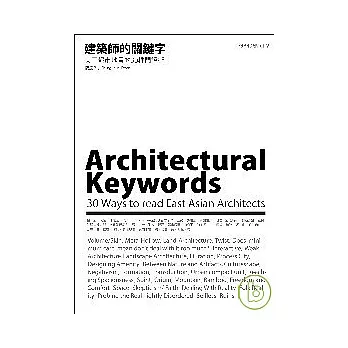

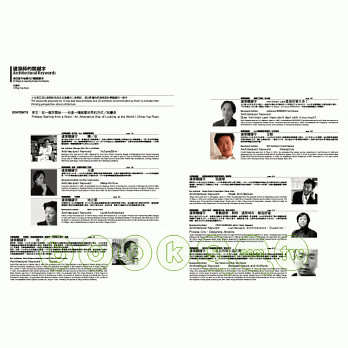
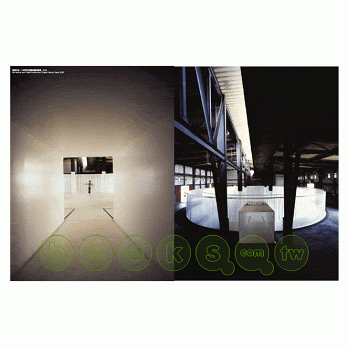
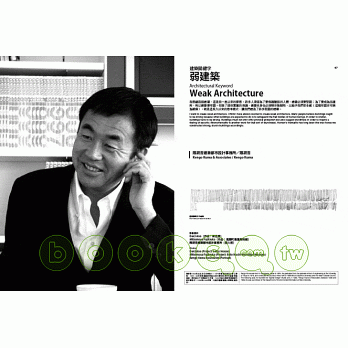
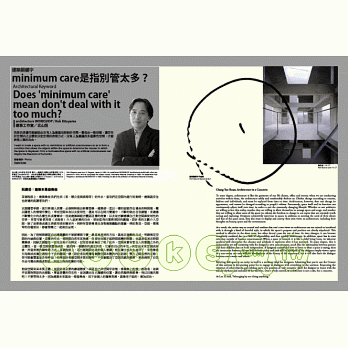
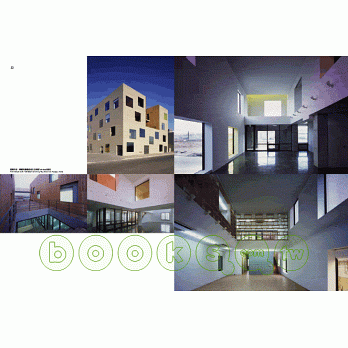
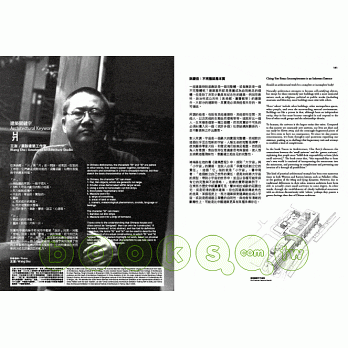
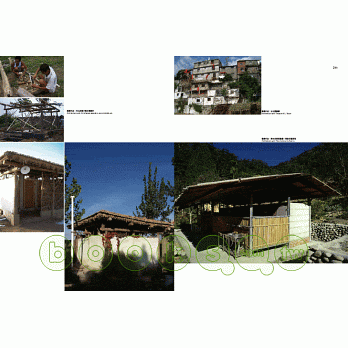
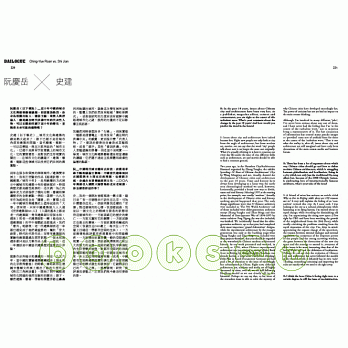
















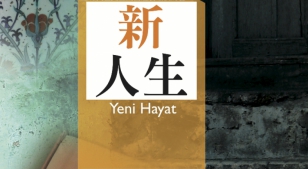




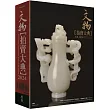
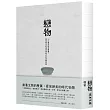
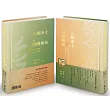
 博客來
博客來 博客來
博客來 博客來
博客來 博客來
博客來 博客來
博客來